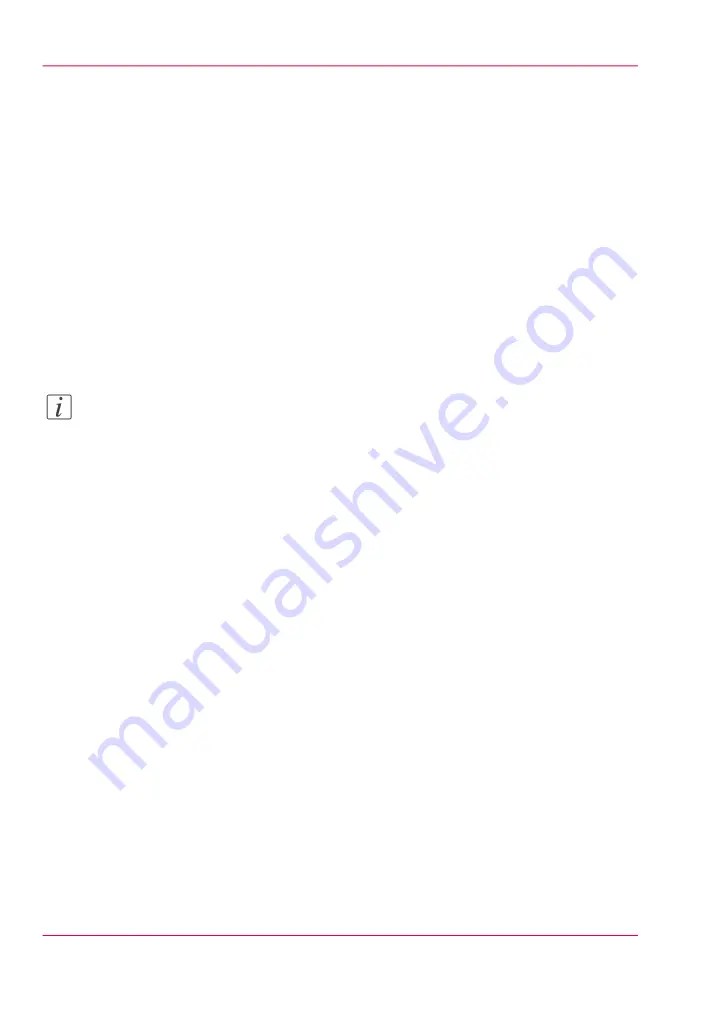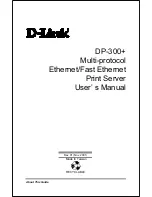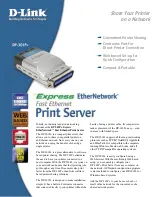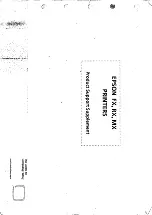
humidity changes of the working environment. Ideally, store media in the same envi-
ronmental conditions as it will be used.
• Store media flat to reduce tendency to bow. Do not use creased, damaged, torn, curled,
or warped material.
• Do not leave material loaded in the printer for an extended period of time. The mate-
rial may curl resulting in misalignment, jams, or decreased printing quality.
• Some material has a printable side and a non-printable side. If you print on a non-
printable side, adhesion and color may be affected.
• Handle media with lint-free gloves. Oil deposits from fingers will degrade print qual-
ity. Do not touch the printable side of material.
• Media must be free of lint, dust, oil or other debris. Use techniques and solutions that
are appropriate to the manufacturer's recommendations.
• Use a tack cloth to clean media as it will reduce static buildup. Press lightly when you
use a tack cloth to prevent residue deposit on the media.
Note:
Dirty media can affect image quality and reliability of printer output. If you wipe the
media with a tack cloth before printing, it will reduce ink buildup on the carriage under-
side. The tack cloth removes static and also removes particles that tend to attract stray
ink drops that result in ink buildup. Tack cloths are used by auto-body shops to clean
cars before painting. Océ does not provide additional tack cloths beyond what is in the
Accessory kit. If you did not receive a cloth or if you wish to purchase additional tack
cloths, they are available at local hardware or auto-oriented stores.
Carriage Collision Recovery
If something on the table is higher than the media (or if the media is thicker than what
is actually set in the print job settings), a carriage collision may occur. If a collision occurs,
the carriage will stop and display a message on the User Interface panel. After the operator
clears the offending media from the table and before the next print is started, printhead
maintenance must be performed (See Printer Maintenance section).
How to Handle Media with Uncured Ink
If the UV ink is not properly cured, wear nitrile gloves when you handle prints. To help
ensure that the ink cures fully, set the UV lamp power as high as possible for the particular
media you are using. This will minimize the risk of skin irritation and sensitization from
possible exposure to uncured ink.
Chapter 5 - How to Operate Your Océ Arizona Printer
94
How to Handle Media
Summary of Contents for Arizona 400 Series GT
Page 1: ...Oc Arizona 400 Series GT Oc Arizona 440 460 480 GT XT Revision A Oc User Manual...
Page 6: ...6 Contents...
Page 7: ...Chapter 1 Introduction...
Page 14: ...Chapter 1 Introduction 14 Product Compliance...
Page 15: ...Chapter 2 Product Overview...
Page 18: ...Chapter 2 Product Overview 18 Printer Specifications...
Page 19: ...Chapter 3 Safety Information...
Page 41: ...Chapter 4 How to Navigate the User Interface...
Page 71: ...Chapter 5 How to Operate Your Oc Arizona Printer...
Page 97: ...Chapter 6 How to Operate the Oc Arizona 400 Series XT...
Page 104: ...Chapter 6 How to Operate the Oc Arizona 400 Series XT 104 How to Print With Dual Origins...
Page 105: ...Chapter 7 How to Operate the Roll Media Option...
Page 136: ...Chapter 7 How to Operate the Roll Media Option 136 How to Use Media Edge Protectors...
Page 137: ...Chapter 8 How to Use the Static Suppression Upgrade Kit...
Page 141: ...Chapter 9 How to Work With White Ink and Varnish...
Page 198: ...Chapter 9 How to Work With White Ink and Varnish 198 How to Create and Use Quick Sets...
Page 199: ...Chapter 10 Ink System Management...
Page 206: ...Chapter 10 Ink System Management 206 How to Change Ink Bags...
Page 207: ...Chapter 11 Error Handling and Trou bleshooting...
Page 211: ...Chapter 12 Printer Maintenance...
Page 265: ...Appendix A Application Information...
















































